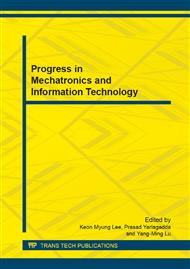p.1076
p.1081
p.1087
p.1093
p.1097
p.1102
p.1106
p.1110
p.1118
The Technology of Software Reliability Virtual Test Based on Software Conventional Failure Data
Abstract:
The technology of software reliability quantitative assessment (SRQA) is based on failure data collected in software reliability test or actual use. However, software reliability testing is a long test cycle and difficult to collect enough failure data, which limits SRQA in the actual project. A large number of software failure found from the software growth test cant be used because the process has nothing to do with the actual use or no record of failure time. In this paper, software reliability virtual testing technology based on software conventional failure data is presented. According to the internal data association between input space of software reliability test and failure data found in conventional software testing, a data matching algorithm is proposed to obtain possible failure time in software reliability testing by matching conventional failure data and the input space. Finally, the imitate engine control software is used as the experimental subject to verify the feasibility and effectiveness of the method.
Info:
Periodical:
Pages:
1097-1101
Citation:
Online since:
November 2013
Authors:
Keywords:
Price:
Сopyright:
© 2014 Trans Tech Publications Ltd. All Rights Reserved
Share:
Citation:


